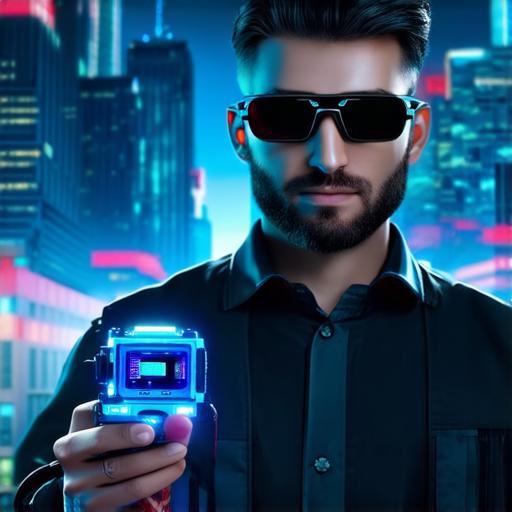1. Smart Glasses
Smart glasses are one of the most popular forms of AR technology. They allow users to view digital information in real-time while wearing regular glasses or sunglasses. The glasses use sensors to track the user’s position and movement, and then overlay digital information onto the real world. This can include things like directions, weather information, and notifications from a smartphone. Smart glasses are commonly used in fields such as construction, aviation, and healthcare, where workers need to access real-time information while on the job.
2. Headsets
Headsets are another form of AR technology that is gaining popularity. They consist of a wearable device that covers the user’s head and displays digital information in front of their eyes. This can include things like 3D models, animations, and video content. Headsets are commonly used in gaming, education, and training applications.
3. Tablets and Smartphones
Tablets and smartphones are also popular forms of AR technology. They allow users to view digital content through their device’s camera, which overlays the real world with virtual objects and environments. This can include things like 3D models, animations, and interactive games. Tablets and smartphones are commonly used in education and training applications, as they allow for easy access to information and interactive learning experiences.
4. Smart Clothing
Smart clothing is a form of AR technology that is still in development. It consists of clothing that has embedded sensors and displays that can overlay digital information onto the real world. This can include things like weather information, notifications from a smartphone, and even haptic feedback to alert users of important information. Smart clothing has the potential to revolutionize how we interact with the world around us and could be used in various industries such as healthcare, fashion, and sports.
5. Projected Displays
Projected displays are a form of AR technology that uses physical screens to display digital content in real-time. These displays can be projected onto walls, floors, or other surfaces, creating an immersive environment for users. This can include things like 3D models, animations, and video content. Projected displays are commonly used in advertising, entertainment, and education applications.
Case Studies: Real-World Applications of AR Technology
1. IKEA Place
IKEA Place is a popular AR app that allows users to visualize how furniture would look in their home before buying it. The app uses the user’s smartphone camera to overlay 3D models of furniture onto the real world, allowing users to see how different pieces would fit into their space. This has helped IKEA increase sales and reduce returns by giving customers a better idea of what they are buying.
2. Snapchat Filters
Snapchat filters are an example of AR technology that is widely used for entertainment purposes. The app allows users to add virtual elements, such as animations and graphics, to their photos and videos. These filters have become extremely popular and have even been used in marketing campaigns for brands like Coca-Cola and McDonald’s.
3. Pokémon Go
Pokémon Go is a popular AR game that has captured the attention of millions around the world. The game uses the user’s smartphone to overlay virtual creatures onto the real world, creating an immersive gaming experience. The game has been used to promote physical activity and has even been used in educational settings to teach about geography and history.
The Future of AR Technology: Trends and Predictions
1. Increased Use of Augmented Clothing
As smart clothing technology continues to develop, we can expect to see more widespread use of augmented clothing in various industries. This could include things like medical uniforms that display vital signs or sports equipment that provides real-time performance data.
2. Integration with Other Technologies
AR technology is expected to integrate with other technologies such as artificial intelligence and virtual reality. This could lead to more advanced and immersive experiences for users, such as virtual shopping or training simulations.
3. Greater Adoption in B2B Applications
AR technology is expected to integrate with other technologies such as artificial intelligence and virtual reality. This could lead to more advanced and immersive experiences for users, such as virtual shopping or training simulations.
Summary
Augmented reality is a rapidly growing technology that has the potential to revolutionize how we interact with the world around us. The various forms of AR technology discussed in this article have different applications and are suitable for different industries. As this technology continues to evolve, we can expect to see even more innovative uses for it in the future. Whether you are a developer, business owner, or simply someone interested in technology, understanding the various forms of AR technology and their applications is essential for staying ahead of the curve.

